Some of the most amazing wildlife in the U.S. lives inside its national parks—but getting too close can be a serious mistake. From massive bison to sneaky bears, these animals aren’t pets, and they don’t play by human rules. Rangers often post warnings, but every year, tourists still get hurt by getting too curious or too close. These parks are special because they give animals the space to live wild and free, just as nature intended. Visiting them is an unforgettable experience—as long as you respect the boundaries. Knowing what to expect can help you stay safe and make the most of the trip.
Yellowstone National Park
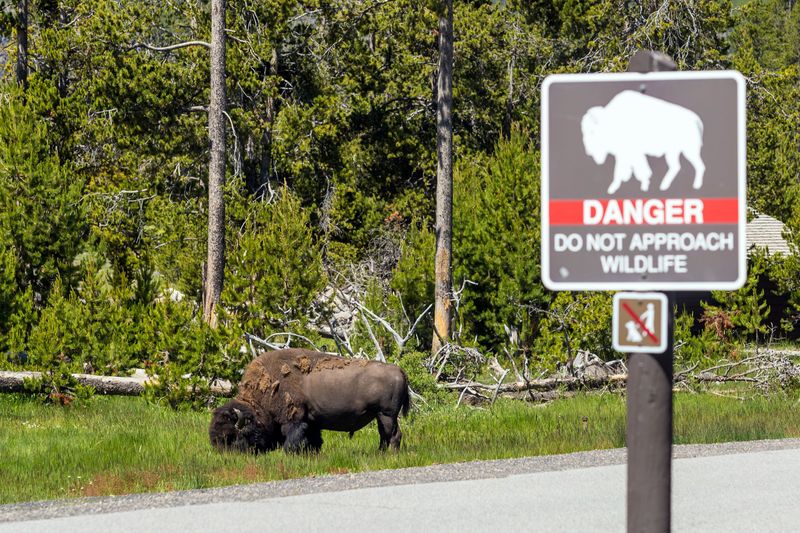
Yellowstone National Park, renowned for its geothermal features, is also a sanctuary for diverse wildlife. Picture a bison, massive and majestic, slowly making its way across the expansive Lamar Valley, steam rising from distant geysers. This park is home to bison herds that roam freely, offering a glimpse into a world where nature reigns supreme.
Rangers advise visitors to maintain a respectful distance, as these creatures, despite their docile appearance, can be unpredictable. Standing too close could provoke a bison, leading to dangerous encounters. Respect the space of these magnificent animals and enjoy the wild beauty from afar.
Grand Teton National Park
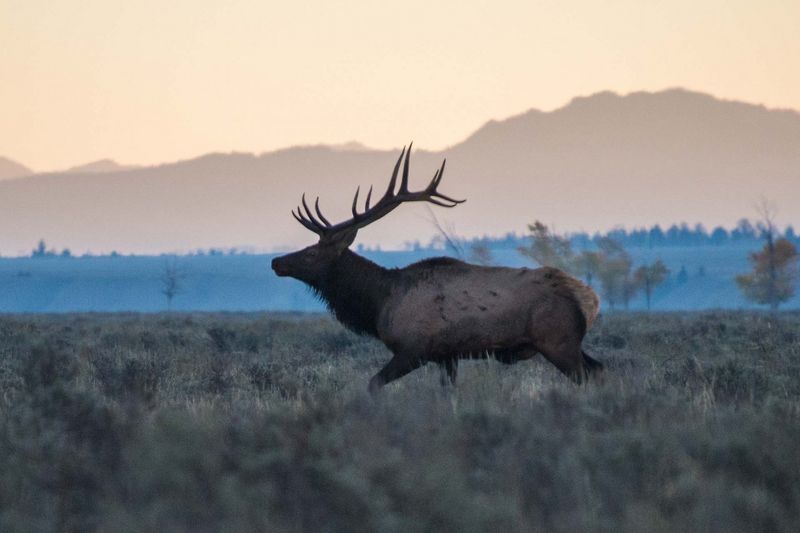
In Grand Teton National Park, the haunting call of the elk echoes through the valleys, especially during the fall rut. Picture an elk, antlers silhouetted against the morning sun, as it calls out in front of the dramatic Teton Range.
This park is a paradise for nature lovers, offering a chance to witness these majestic creatures in their natural habitat. However, rangers emphasize the importance of keeping distance, especially during mating season, when elk can become aggressive. Stand back and let the wild rhythms of nature unfold around you, in this stunning Wyoming landscape.
Denali National Park
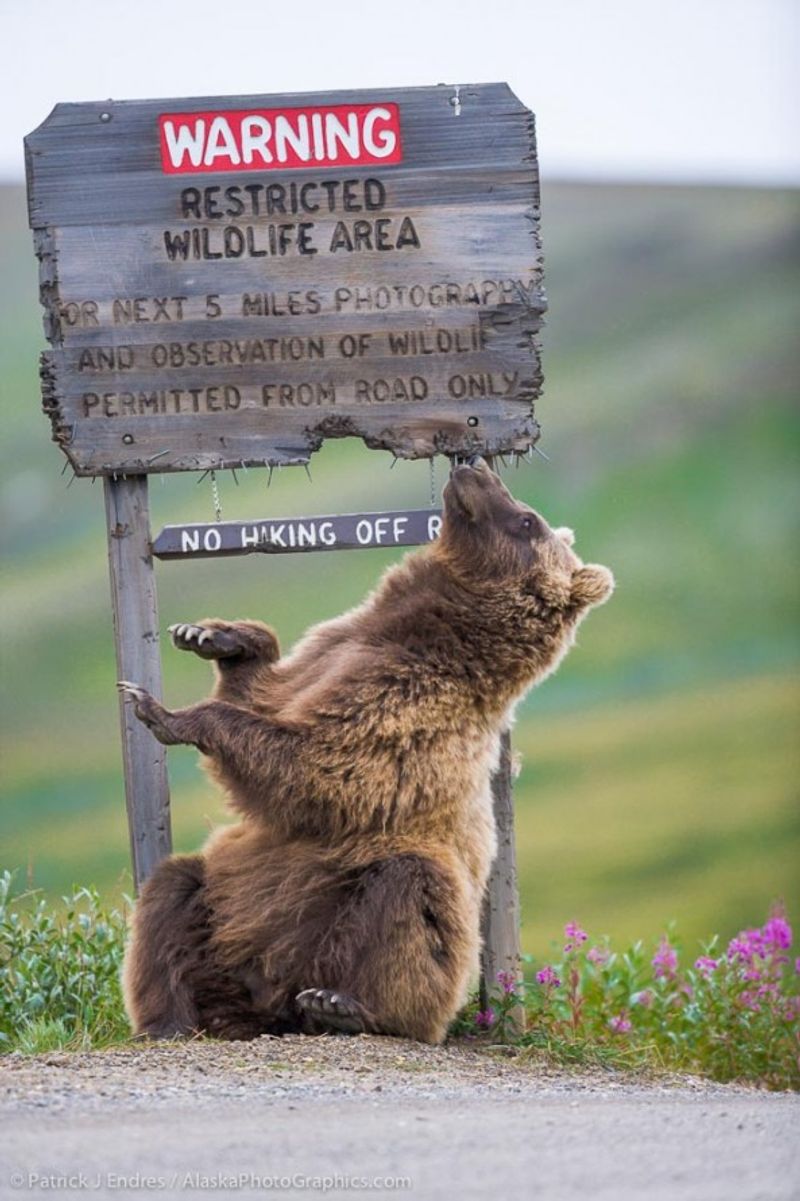
Denali National Park, with its towering peaks and vast wilderness, is a prime location for spotting grizzly bears. Imagine a bear, powerful and focused, fishing for salmon in the clear, rushing waters of a park river.
While these magnificent creatures are a sight to behold, they are also a reminder of the wild’s untamed nature. Park rangers stress the importance of keeping a safe distance to prevent encounters that could be dangerous for both bears and humans. Enjoy the serene beauty of Denali, but always be bear aware and respect their space.
Great Smoky Mountains National Park

The Great Smoky Mountains National Park, shrouded in mist and mystery, is home to a thriving black bear population. Picture a bear family, mother and cubs, foraging together amidst the rich greenery, with the misty mountains as a backdrop.
These bears are a symbol of the park’s wild heart, but they require space and respect. Rangers remind visitors to secure food and keep a safe distance to avoid any potentially dangerous interactions. Witness the playful nature of these bears from afar, ensuring a safe experience for both humans and wildlife.
Everglades National Park
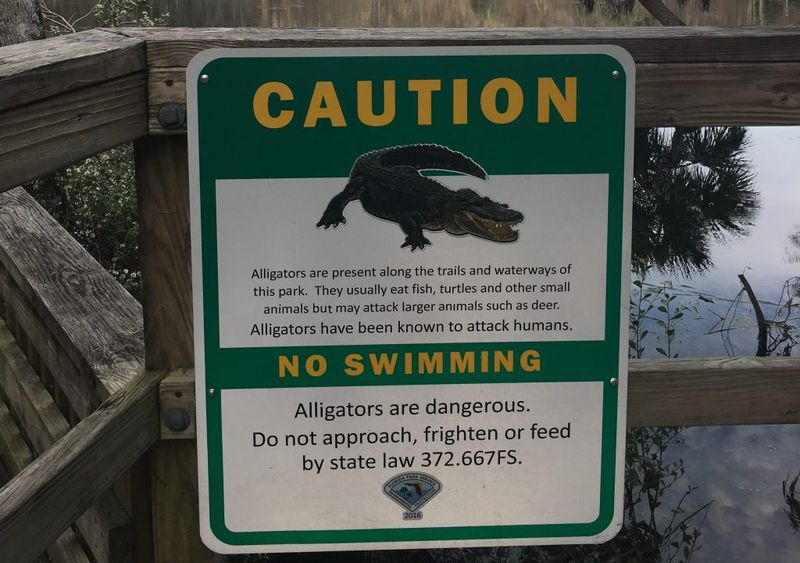
In Everglades National Park, the sight of an American alligator basking by the water’s edge is iconic. Picture this formidable reptile, eyes just above the water, as it soaks up the Florida sun.
The Everglades offer a unique ecosystem where alligators are apex predators, commanding respect. Rangers advise maintaining a safe distance, as these creatures can be surprisingly swift and powerful. Enjoy the calm waters and abundant wildlife, but always remember that caution is key in the presence of alligators. Let them reign undisturbed in their watery domain.
Yosemite National Park
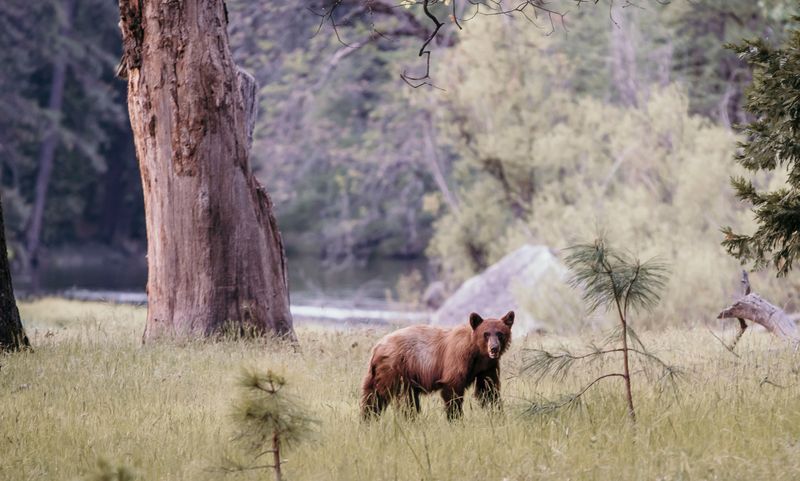
Yosemite National Park, with its awe-inspiring granite cliffs, is also a haven for black bears. Envision a bear, agile and curious, as it scales a tree, with the iconic Half Dome in the background.
While these bears are a part of the Yosemite experience, it’s crucial to admire them from afar. Rangers caution visitors to secure all food and rubbish, to prevent bears from venturing into human areas. Observing these bears from a distance safeguards both their wild nature and visitor safety, ensuring that Yosemite remains a sanctuary for all its inhabitants.
Katmai National Park

Katmai National Park is renowned for its stunning displays of nature, particularly the sight of brown bears fishing at Brooks Falls. Picture a bear, focused and powerful, as it catches leaping salmon in mid-air.
This park offers one of the best opportunities to observe bears in their natural environment. Rangers stress the importance of maintaining distance, to protect both the bears and the visitors. Keeping a respectful space allows everyone to appreciate the raw beauty and power of nature, without interfering with the bears’ natural behaviors.
Rocky Mountain National Park

In Rocky Mountain National Park, the sight of bighorn sheep perched on rocky outcrops is a testament to nature’s adaptability. Imagine these agile creatures, poised against a backdrop of rugged mountains and expansive skies.
The park provides a sanctuary for these sheep, whose impressive horns and climbing skills captivate visitors. However, rangers emphasize keeping a respectful distance to avoid disturbing their natural behaviors. From a safe vantage point, one can admire the harmony of these animals within their mountain home, witnessing the balance of nature in all its glory.
Acadia National Park

Acadia National Park’s rugged coastline is home to the swift and elusive peregrine falcon. Picture this bird of prey, wings spread wide, as it soars over the rocky cliffs, scanning for its next meal.
These falcons are a symbol of speed and precision, mastering the skies above Acadia’s dramatic landscape. Visitors are reminded by rangers to observe from a distance, ensuring the falcons can hunt and nest undisturbed. Witnessing these birds in flight is a breathtaking reminder of the park’s diverse wildlife, offering a glimpse into the lives of these incredible predators.
Glacier National Park

Glacier National Park, with its rugged mountains and icy landscapes, is home to the resilient mountain goat. Visualize these goats, sure-footed and graceful, as they navigate the steep, rocky terrain with ease.
Known for their climbing prowess, these goats are a unique aspect of Glacier’s wildlife. Rangers advise keeping a distance, as these animals prefer solitude and can be unpredictable if approached. Observing them from afar ensures their natural behaviors remain undisturbed, and allows visitors to enjoy the serene beauty and challenge of Glacier’s landscapes.
Olympic National Park
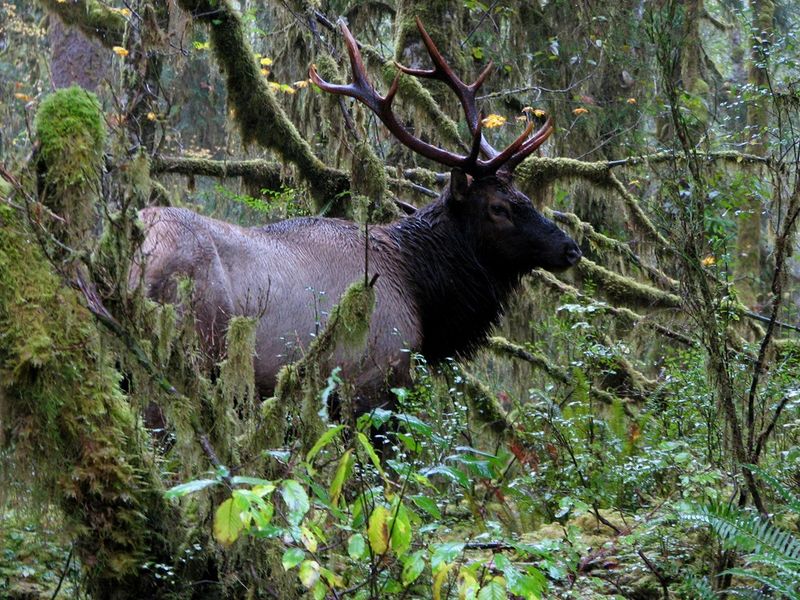
Olympic National Park’s diverse ecosystems are home to the majestic Roosevelt elk. Picture these elk, large and stately, grazing amidst the lush greenery of the Hoh Rainforest.
These animals are emblematic of the park’s rich biodiversity, thriving in the temperate rainforest’s unique environment. Rangers emphasize respecting their space, as elk can be unpredictable especially during mating season. By observing from a distance, visitors can appreciate the grandeur of these creatures while ensuring their own safety and the well-being of the elk.
Zion National Park
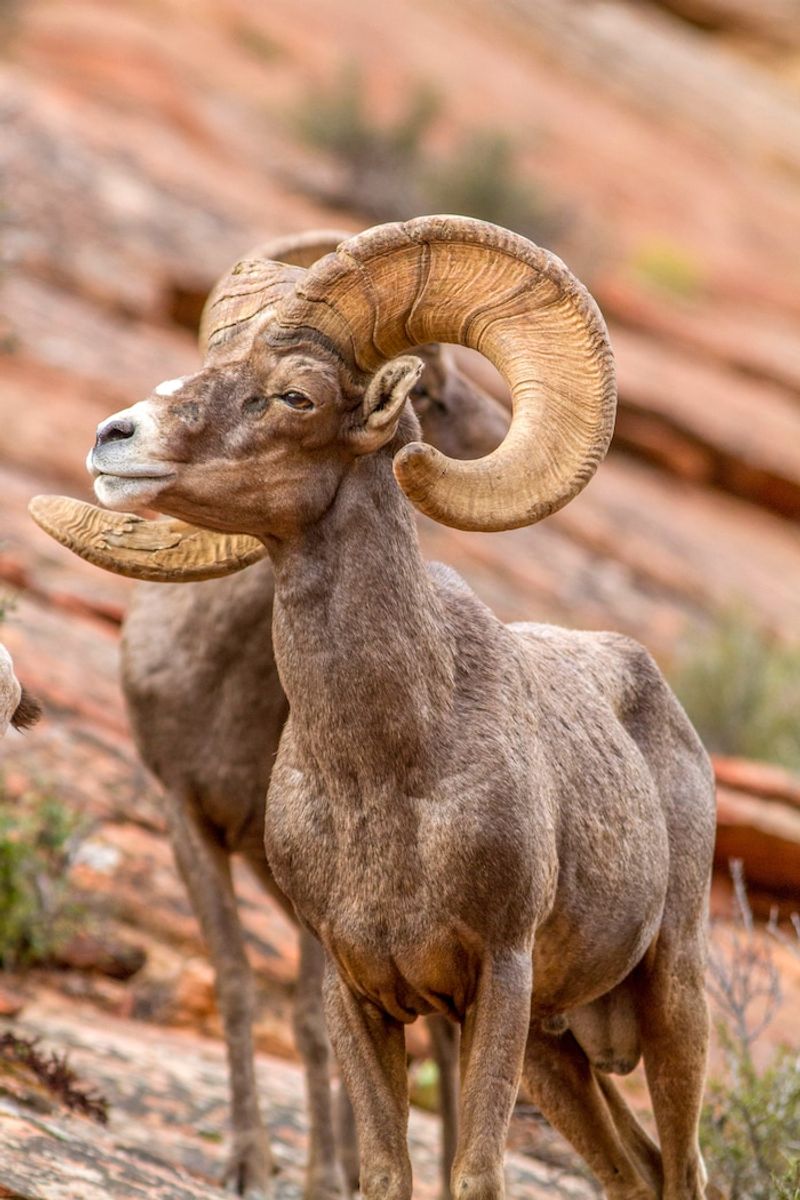
Zion National Park’s sandstone canyons are home to the agile desert bighorn sheep. Imagine these sheep, nimble and resilient, as they traverse the rocky, sunlit landscapes of Utah’s canyon country.
These sheep are perfectly adapted to the arid environment, and their presence adds to Zion’s allure. Park rangers remind visitors to keep their distance to avoid disrupting the sheep’s natural routines. By respecting their habitat, one can witness the elegance and resilience of these creatures, a testament to nature’s adaptability and grace within Zion’s dramatic scenery.
Badlands National Park

Badlands National Park, with its striking geological formations, is also a haven for prairie dogs. Picture these small, social creatures, peeking out of their burrows, keeping a vigilant watch over their prairie kingdom.
Their lively communities are a vital part of the park’s ecosystem, offering a glimpse into the complex social structures of these animals. Rangers advise maintaining a safe distance to avoid disturbing their habitats. Observing these charismatic creatures from afar provides insight into their world, while ensuring the preservation of their unique prairie home.
Great Basin National Park
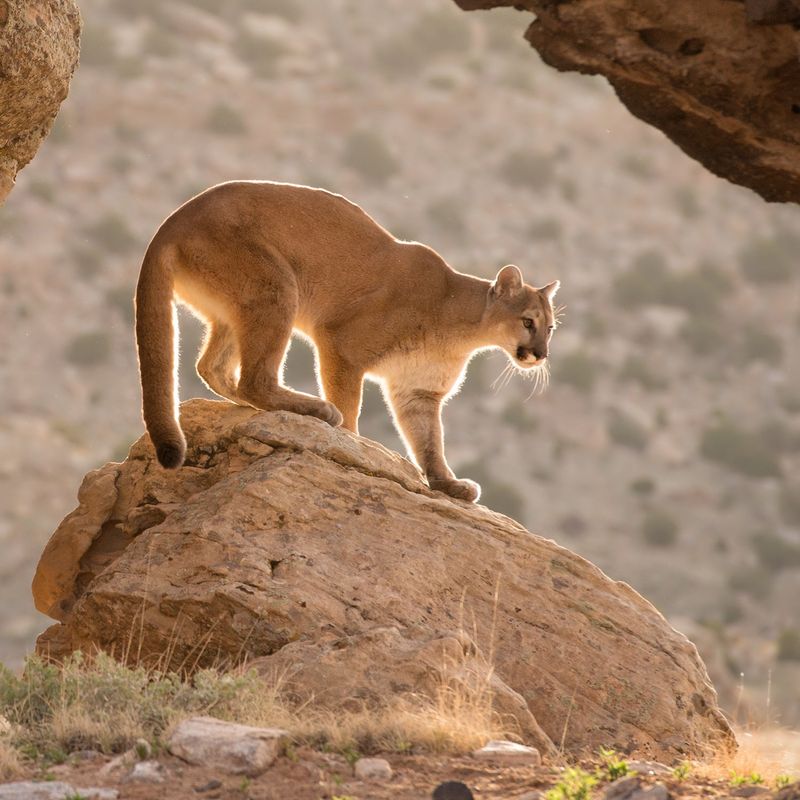
Great Basin National Park’s ancient bristlecone pines stand as silent witnesses to the park’s enduring wilderness. Imagine a mountain lion, elusive and powerful, moving stealthily among these ancient trees.
Though sightings are rare, knowing these predators roam the park adds a thrilling edge to any visit. Rangers emphasize keeping a distance and respecting these animals’ natural territories. Observing from afar ensures personal safety and the conservation of these majestic creatures’ habitats, allowing the wild heart of Great Basin to remain untouched and free.
Shenandoah National Park
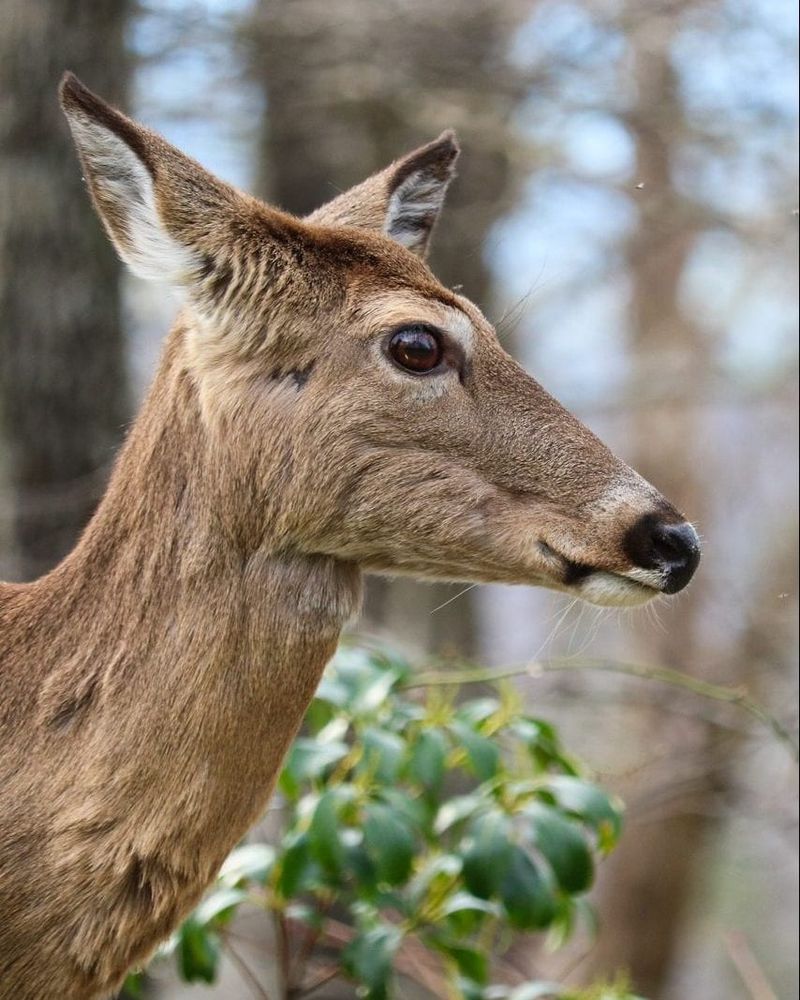
Shenandoah National Park’s rolling landscapes are a picturesque backdrop for the graceful white-tailed deer. Imagine these deer, elegant and cautious, moving through a sunlit meadow, with the Blue Ridge Mountains in the distance.
The park provides a sanctuary for these deer, whose presence adds to the tranquility of the landscape. Visitors are advised to maintain a respectful distance, allowing the deer to roam freely and ensuring that their behaviors remain natural. Observing these creatures in their serene environment is a peaceful reminder of the harmony and beauty within Shenandoah.

